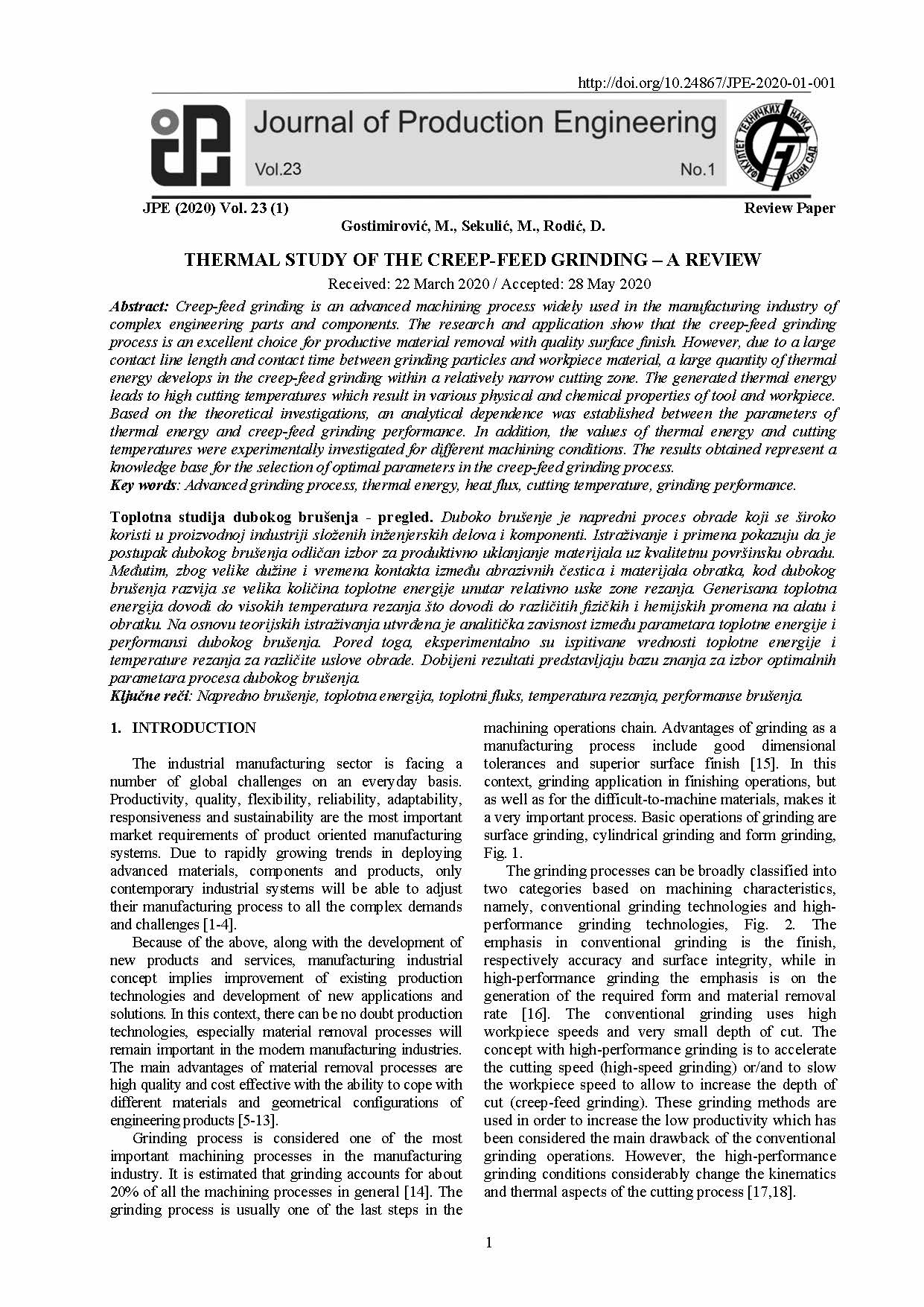
Published 2020-06-30
abstract views: 45 // FULL TEXT ARTICLE (PDF): 33
Keywords
- Advanced grinding process,
- thermal energy,,
- heat flux,
- cutting temperature,
- grinding performance
How to Cite
Copyright (c) 2023 Journal of Production Engineering

This work is licensed under a Creative Commons Attribution 4.0 International License.
Abstract
Creep-feed grinding is an advanced machining process widely used in the manufacturing industry for complex engineering parts and components. Research and applications have shown that the creep-feed grinding process is an excellent choice for productive material removal with a high-quality surface finish. However, due to the large contact line length and contact time between grinding particles and workpiece material, a significant amount of thermal energy develops during creep-feed grinding within a relatively narrow cutting zone. The generated thermal energy leads to high cutting temperatures, which affect various physical and chemical properties of both the tool and the workpiece. Theoretical investigations have established an analytical relationship between thermal energy parameters and the performance of creep-feed grinding. Furthermore, the values of thermal energy and cutting temperatures were experimentally examined under different machining conditions. The results obtained provide a knowledge base for selecting optimal parameters in the creep-feed grinding process.

